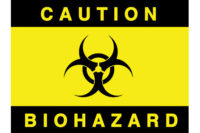What You Get
In addition to receiving the full, 100+ page report, participants also receive a confidentialCompany Performance Report, which presents their company’s own ratios and data, computed in a manner consistent with the full report. Survey participants also receive a bonus: an interactiveFinancial Insights Toolfor identifying the profitability impact of various “what if” scenarios. This easy-to-use Excel-based file on CD is sent to each participant, pre-loaded with their own company’s results, along with industry norms. With this tool, the profitability impact of improvements to accounts receivable, inventory turns, fixed expenses, gross margin and sales can be easily determined.Protecting Your Privacy
The OPR is compiled by the independent firm of Industry Insights, Inc., a highly reputable survey research firm in Columbus, OH. Upon receipt of each completed survey, Industry Insights assigns a confidential company code number and all name identification is then removed. Thereafter, each form is handled on an anonymous basis, and at no time is any individual firm’s data revealed to anyone, either in or outside of the industry.How to Participate
ASA member wholesalers will receive their invitations to participate in the critical survey within the month of March. Those who submit their forms by the early deadline will receive a “Quick Turnaround Summary” in advance of the final reports, which are issued approximately 90 days later. The OPR is available to ASA members who participate for $150, a small investment for a huge amount of valuable information which, if carefully used, can pay back in spades.For more information, contact Chris Murin at 312-464-0090, ext. 213 or email cmurin@asa.net.
SAMPLE OF PERFORMANCE RATIOS
PLUMBING & PVF FIRMS*
Net Profit After Tax to Net Worth
15.0%
Net Sales to Total Assets
2.5X
Net Profit Before Tax to Net Worth
21.9%
Net Profit Before Tax to Total Assets
10.1%
EBIT to Total Assets
11.3%
Gross Margin on Net Sales
25.3%
Current Asset Turn (Sales/Current Assets)
3.1X
Total Debt to Net Worth
112.4%
Net Sales to Working Capital
6.1X
Average Invoice Size
$240
Average Billing Line
$54.06
Overall Sales per Employee
$363,739
Overall Gross Margin per Employee
$81,909
Vendor Rebates as % of Sales
2.9%
Number of SKUs
22,000
* The OPR provides breakdowns in these and other areas among plumbing firms, PVF firms, plumbing & PVF firms and HVAC and other firms. Further analysis compares all reporting firms to those identified to be in the “High Profit” category (those whose before tax return on assets are in the upper half of those reporting).
This data excerpted from the 2006 Operating Performance Report, copyright 2006, American Supply Association.
SAMPLE EXCERPT OF A COMPANY “REPORT CARD”
Company #500
NET PROFIT AFTER TAX TO NET WORTH: FAIR
Return on net worth (RONW) is one overall measure of company profitability, expressing the percentage return earned on the owner’s investment in the business. Your firm’s RONW was below the typical performance level for reporting companies in the industry, suggesting that some concern may be warranted. If you choose to investigate for possible profit leaks, some possible areas of review are asset turnover, profit margin, and financial leverage (the three basic components of RONW).
TOTAL ASSETS TO NET WORTH: GOOD
Total assets to net worth is a good indicator of financial leverage, measuring the relation of total assets to the amount of net worth. Leverage is the extent to which a company is financed by debt as opposed to the owner’s funds. The higher the ratio, the higher the leverage. Your company’s total assets to net worth ratio was lower than the typical leverage position for reporting companies in the industry. This indicates that excess capacity for borrowing funds probably exists were it to become necessary for your company to borrow additional capital. Although many businesses understandably like to keep borrowing to a minimum, additional debt would actually increase your overall profitability as long as your business can earn a before tax return which exceeds the borrowing rate. While each firm must determine its own optimal leverage position, you may wish to investigate your short- and long-term debt levels relative to net worth to see if your company is maximizing the benefits of debt financing.

